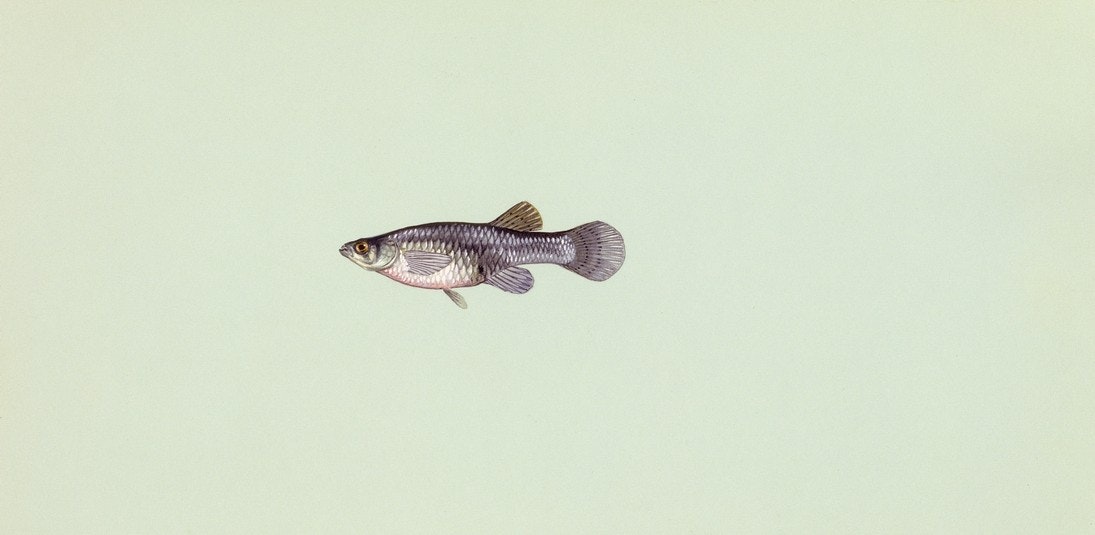Biological Control
Biological control can provide either short-term or long-term control depending on the agent used. Napa County MAD utilizes the following biological control agents.
The spores of the bacterium Bacillus thuringiensis var. israelensis (Bti) and the live bacterium Bacillus sphaericus (Bs)
The spores of Bti and Bs only affect the larval or immature stages of the mosquito. These pesticides only provide short-term control with Bti persisting in the environment for about 36-48 hours and Bs lasting about three weeks. Factors that affect their usefulness include temperature, pH, salinity, organic content of the water, and the density of both vegetative cover and immature mosquito population at the breeding site. These materials also require proper timing of their application in order to be effective. Late stage, non-feeding immature mosquitoes, pupae and adults are unaffected by Bti and Bs.
For more information, see our Pesticides page.
The mosquitofish, Gambusia affinis
Use of mosquitofish is a long-term control strategy that works well in permanent water bodies such as stock ponds, back yard ponds, water gardens and rainwater barrels. Salinity, pH, density of vegetative cover, presence of game fish such as Bluegill or Bass, persistent water temperatures above 80° F, and organic content of the water are the limiting factors for the usefulness of this control strategy.
Facts about Mosquitofish

Gambusia affinis, also called “mosquitofish”, are indispensable to our mosquito control program in Napa County. These fish eat mosquito larvae. Mosquitofish are furnished without charge for stocking ornamental ponds, unused swimming pools, and animal watering troughs. They require no feeding or care other than to protect them from garden sprays, chlorine or other chemicals, and predators such as raccoons. The District also stocks thousands of these fish each year in artificial lakes, reservoirs, and wastewater ponds to eliminate the need for frequent spraying.
These fish do not lay eggs but give birth to well-developed and very active young. Therefore, they require no special environment, as most other fish do, for depositing and hatching the eggs. Mosquitofish breed throughout the summer producing a new brood at monthly intervals. The young are approximately 1/2 inch in total length when born and are immediately ready to begin the work of eating mosquito larvae. Gambusia grow rapidly, reaching a maximum size of about two inches. The earliest broods of the season are born in April-May, become sexually mature and produce young when four to five months old.
Obtaining Mosquitofish
Fish may be picked up between the hours of 8:00 am and 3:00 pm (Monday to Friday) or by appointment at the District office, 15 Melvin Rd., American Canyon, from April through October. Please call our office at (707) 553-9610 to confirm availability prior to coming and be sure to bring a clean five-gallon bucket when you visit our office for fish.
There is no charge for obtaining mosquitofish from the District.
In addition, our mosquito fish are available from April 15 to October 15 at the following locations. Please call your preferred pick-up location first to confirm availability.
Van Winden’s Garden Center
1805 Pueblo Avenue
Napa, CA 94588
(707) 255 – 8400
St. Helena Central Valley Builder’s Supply
1100 Vintage Avenue
St. Helena, CA 94574
(707) 963-3622
Please be advised that ponds which have game fish (e.g., bass, trout, blue gill, etc.) will not successfully support mosquito fish because the game fish will eat them. Therefore mosquito fish are not dispensed to these types of ponds and another form of mosquito control will be required. Please feel free to contact us if you have any questions about the compatibility of mosquito fish with other types of fish or pond organisms.
FISH PREVENT MOSQUITOES!
